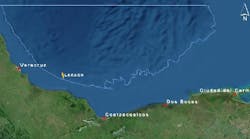Offshore staff
WASHINGTON, D.C. – The American Petroleum Institute has published two new oil and natural gas industry standards for well design and drilling operations.
One of these is RP 96, “Deepwater Well Design and Construction.” It provides a reference for offshore well design, drilling, and completion operations in deepwater, and covers the range of considerations to include when planning and executing deepwater drilling.
This document addresses the following:
- Identifies the appropriate barrier and load case considerations to maintain well control during deepwater well operations (drilling, suspension, completion, production, and abandonment).
- Supplements barrier documentation in API 65-2 with a more detailed description of barriers and discussion of the philosophy, number, type, testing, and management required to maintain well control. This document also supplements the barrier documentation in API 90 with regard to annular pressure buildup. Abandonment barrier requirements are described for use when designing the well.
- Discusses load assumptions, resistance assumptions, and methodologies commonly used to achieve well designs with high reliability. The load case discussion includes less obvious events that can arise when unexpected circumstances are combined.
- Describes the risk assessment and mitigation practices commonly implemented during deepwater casing and equipment installation operations.
The other standard is Technical Report 1PER15K-1, “Protocol for Verification and Validation of High-Pressure High-Temperature Equipment.” This publication gives a process to evaluate equipment for use in HP/HT environments offshore and onshore.
The Report focuses on an evaluation process for HP/HT equipment in the petroleum and natural gas industries and includes design verification analysis, design validation, material selection considerations, and manufacturing process controls “necessary to ensure the equipment is fit-for-service in the applicable HP/HT environment.”
This follows the November 2012 publication of API Standard 53, “Blowout Prevention Equipment Systems for Drilling Wells.”
“We are the global leaders on setting the industry’s standards, which are developed in accordance with ANSI-approved procedures in a rigorous and open review process,” said David Miller, API director of Standards. “Every one of our standards is built on expert input from industry and the regulatory agencies.”
4/05/2013




